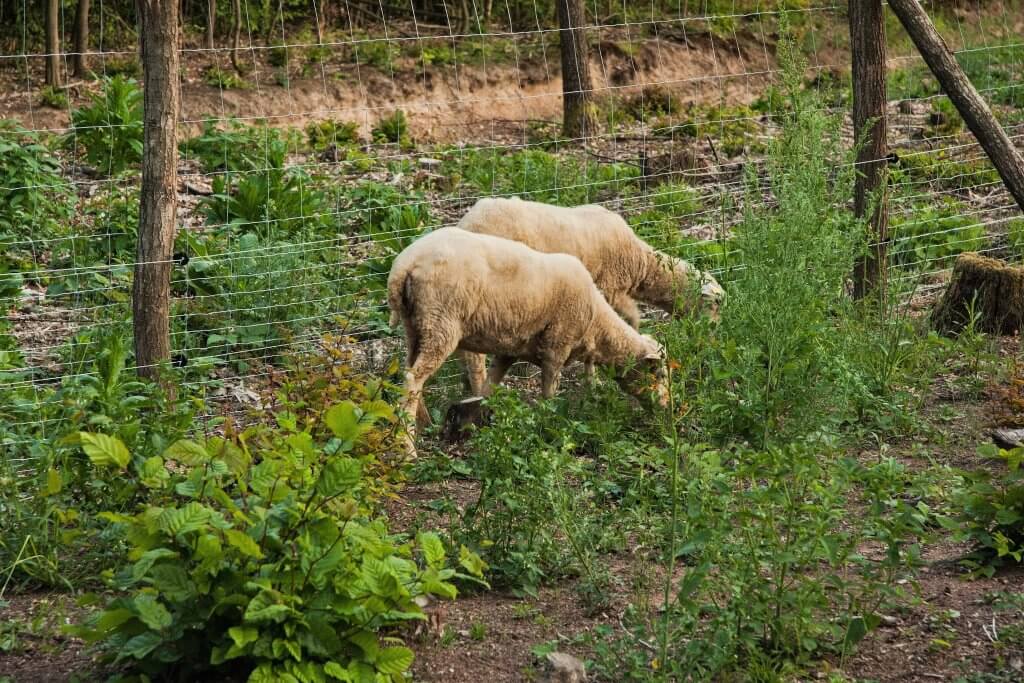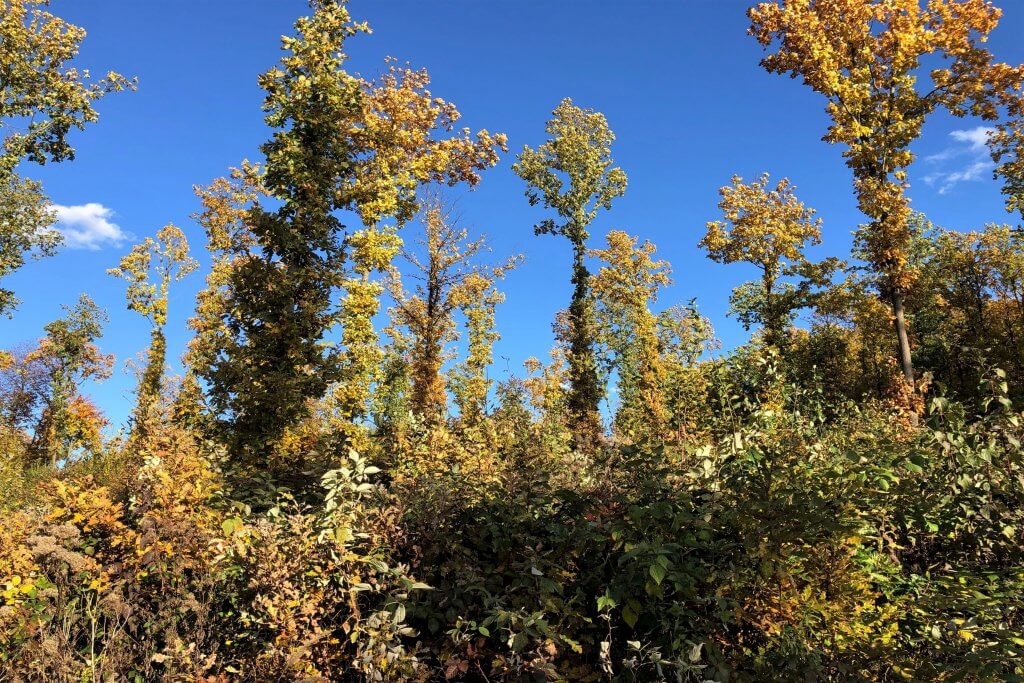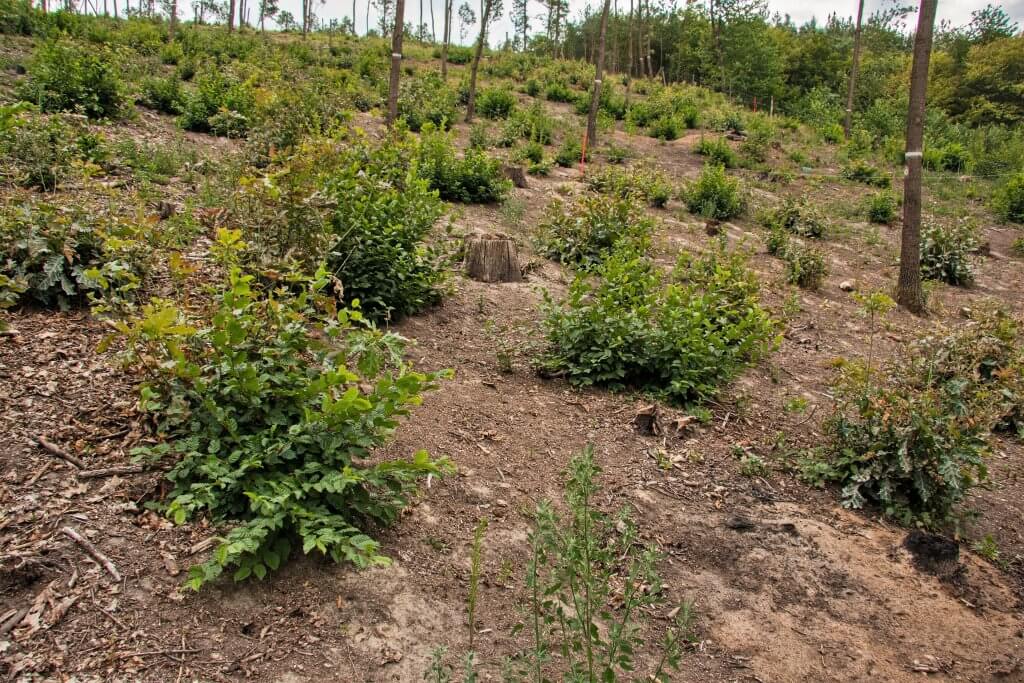Botanists, pedologists and other scientists at the Faculty of Forestry and Wood Technology have been researching coppice, also sprout or low forest, for the past five years. A coppice forest is usually created after a tree is harvested and new stems start sprouting from the tree’s stump or root area. Scientists are finding out how different types of once-traditional management affect the state of the forest. The experiments are being carried out on experimental plots at the Hradisko site in the territory of the Masaryk Forest Training Enterprise at Křtiny.
Experimental plots near Bílovice nad Svitavou are used by experts to simulate historically carried out activities in the coppice for research and educational purposes. “On one plot we have a so-called pure coppice with standards, which are trees of seed origin that have been left in the area without any other effects simulating so-called traditional management. On another plot there is a coppice where also raking takes place, and on another one there is also forest grazing by sheep. On some plots we carry out only one activity, but we also have areas where all activities are carried out simultaneously,” explains Jan Kadavý from the Institute of Forest Management and Applied Geoinformatics.
The coppice forests have been traditionally managed for centuries. “Apart from the fact that the coppice was used as a source of firewood, it was quite normal for cattle to move around there, so there was grazing, raking of litter, grass cutting, i.e. cutting grass for cattle food,” Kadavý says. These activities were often carried out to the limit of what was bearable for the forest ecosystem.
After the harvesting of stands in the experimental plots which led to a significant lightening of the area, botanists recorded a sharp increase in the number of plant species in the woodland-floor vegetation. After an initial average of 17 species, they counted more than 100. “The experiment showed that although the number of species and their diversity increased and some rare plants appeared, others disappeared because they were tied to the darker forests that were there before the harvesting,” says Michal Friedl from the Institute of Forest Botany, Dendrology and Geobiocenology.



After the Second World War, the area of coppices began to decline sharply and was perceived negatively until it fell into oblivion. It was only 15 to 20 years ago that biologists and especially entomologists began to reopen the subject. “They noticed that the landscape was depleted of various kinds of insects, especially butterflies, and began to ask why. They concluded that it was related to the loss of coppices. Many of these butterflies are associated with semi-open forests. That was the first impulse to start talking about coppicing again,” Friedl explains.
Whether coppicing is a risky form of management is also being investigated by pedologists. According to them, it is mainly the combination of these traditional activities that a man has carried out unmanaged in the forest that is considered risky, not the coppice itself. Historically, litter raking has been devastating to forests. “While the biomass removed from the forest during logging is de facto nutrient-poor, litter, i.e. the litterfall that was used as bedding for livestock, is much richer in nutrients,” says Aleš Kučera of the Institute of Geology and Pedology. With the removal of the litterfall, the forest has lost an important organic layer, which is characterised by the abundant microbial life that is so important to it.
“When forming a coppice, the stool shoots that grow out of the stumps produce a large amount of biomass due to their still active and developed root system. A frequent argument against coppices has been the forest´s significant depletion of nutrients, which however are returned to the soil each year as the leaves fall,” adds Kučera. For pedologists, five years of experimentation is too short a time to draw any major conclusions.
Dendrometric data, which measure tree growth, how fast it occurs, how large it is, when it peaks and when it starts to decline, so far confirm the conclusions of earlier works on coppice forests carried out in the area of Training Enterprise at Křtiny. The standards in coppice increase in size after the release up to the fourth year and then their increment declines. The assumption that the number of new individuals – stool shoots – increases with increasing intensity of experimental activities, which is related to the stimulation of their regeneration capacity, has been confirmed. Data collection also continues in this case.
The findings so far suggest that coppice management is not to be seen as doom for the forest ecosystem. Scientists are determined to continue their research and data collection. The longer they continue to make measurements and comparisons, the more conclusive their findings will be.
The first evidence of coppicing, incidental at that time, dates back to the Neolithic, younger Stone Age. People at that time used the wood they had at hand, and only later they discovered the principle of regeneration, in the case of coppice forests, vegetative regeneration, sprouts from the root system. Fully conscious coppice management dates back to the 17th-18th centuries. The peak in Central Europe came in the 18th century, and the turning point, when people looked for strong logs for building purposes rather than ‘fast’ wood, where quality was of little importance, came in the 19th century. The discovery of hard coal also played a role. At that point, coppice and the forest in general can also “take a deep breath”. On the other hand, the regulation of game numbers becomes essential for the healthy growth of the forest.
For more information please contact: Ing. Michal Friedl Ph.D., Institute of Forest Botany, Dendrology and Geobiocenology, +420 605 746 875, michal.friedl@mendelu.cz; Associate Professor Dr. Ing. Jan Kadavý, Institute of Forest Management and Applied Geoinformatics, +420 605 162 258, jan.kadavy@mendelu.cz; Ing. Aleš Kučera Ph.D., Institute of Geology and Pedology, ales.kucera@mendelu.cz
More news
-
The Horizon Europe project, Eurasian Network for Collaborative Research on Tree-Root-Mycorrhizal-Pathogen Interactions in Forest Soils (EuAsiaN-ROOT), coordinated by the Faculty of Forestry and Wood Technology, aims to provide a deeper…24. 6. 2025
-
Five Female Wolves Fitted with GPS Collars in the Beskydy and Javorníky…
Researchers from the Faculty of Forestry and Wood Technology at Mendel University in Brno have successfully captured and fitted GPS telemetry collars on five female wolves in the Beskydy and Javorníky Mountains over the past two years. These…28. 5. 2025 -
FFWT launches unique data collection on forest ecosystem functioning in MENDELU…
The Department of Forest Ecology at the Faculty of Forestry and Wood Technology of Mendel University in Brno (FFWT MENDELU), in cooperation with the Masaryk Forest Training Enterprise at Křtiny (ŠLP Křtiny), has launched monitoring of selected…23. 5. 2025 -
Professor Vladimír Tesař on the 30th anniversary of Pro Silva Bohemica: focus…
The Faculty of Forestry and Wood Technology and other stakeholders commemorated the thirtieth anniversary of Pro Silva Bohemica, an association of foresters dedicated to promoting close-to-nature forest management. Professor Emeritus Vladimír Tesař…9. 5. 2025 -
Scientists aim to determine which tree species have the most significant…
An international team studying the growth of 223 tree species across 160 experimental forests worldwide has found that conservative tree species—efficiently conserving resources such as nutrients, water, and energy—tend to grow faster under natural…16. 4. 2025 -
FFWT and UFE Křtiny partners of the ForDiL project supporting the education of…
The Faculty of Forestry and Wood Technology, Mendel University (FFWT MENDELU) and the University Forest Enterprise Masaryk Forest Křtiny (UFE Křtiny) are the main partners of the ERASMUS+ project Forest of the future: digital tools for learners to…11. 4. 2025 -
FFWT MENDELU and UFE Křtiny hosted Belgian students within the Erasmus+…
The students from Institut Technique Horticole de Gembloux were hosted by the Faculty of Forestry and Wood Technology, Mendel University (FFWT MENDELU) and the University Forest Enterprise Masaryk Forest Křtiny (UFE) as part of the Erasmus+ short…7. 4. 2025 -
Student Design 2025: the Upholstery Craft Award goes to MENDELU
The Student Design 2025 competition, held at the Mobitex fair at the Brno Exhibition Centre, awarded the works of students from secondary schools and universities from the Czech and Slovak Republics. The Upholstery Craftsmanship Award went to…2. 4. 2025 -
Pigeons' behaviour and habits in Brno: Research by the Faculty of Forestry and…
The Department of Forest Conservation and Wildlife Management at the Faculty of Forestry and Wood Technology (FFWT) has been conducting research on urban wildlife for more than two years. One part of the research focuses on wild pigeons,…26. 3. 2025 -
FFWT MENDELU participates in Diplomacy Week
The Faculty of Forestry and Wood Technology of Mendel University (FFWT MENDELU) is participating in Diplomacy Week, which takes place from 24 to 28 March 2025 in the Czech Republic. On this occasion, the Deputy Ambassador of Bosnia and Herzegovina…18. 3. 2025